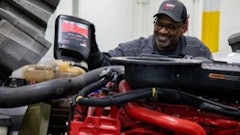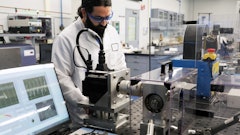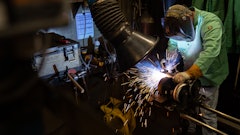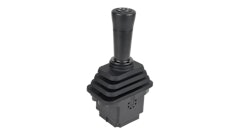When it comes to versatility, few machines can boast the diversity of jobs that the utility vehicle (UTV) has been hired to perform. Offered by an ever-increasing number of large and small manufacturers in an amazing array of configurations, UTVs can be found in coal mines below the surface of the earth or in the woods moving hunters to their tree stands. They’ve also proven to be the perfect format on which to test new technologies, operating as support vehicles and as test mules.
A few years ago Hydrogenics, a Mississauga, Ontario-based company, began a partnership with Deere & Co. wherein several of Hydrogenics’ 10-kW fuel cell power mod-ules were tested by Deere’s ePower Technologies group in Gators and Pro Gator UTVs to evaluate them for use in off-road applications.
Hydrogenics likes the small platform of the UTV for developing its fuel cell technology. “If we were to develop engines for buses at 250 kW, the technology is a lot more costly than its rating at 10 kW,” says Pierre Rivard, CEO and president, Hydrogenics. “We get a more disposable obsolescence cycle which facilitates technology improvements. It’s easier to improve on the technology at lower cost and introduce it to broader range of applications.”
In September 2003, when OEM Off-Highway talked to Rivard, he said, “We are in the first few minutes of a 24-hour day, and there will be many more advances coming in the near future.”
Since then, much progress has been made. Rivard says there have been more new programs within the last year and a half than he’s seen in the last four years. The improvements have taken place in both the cost and the performance categories. “We have made great strides in our HyPM technology, especially in the last 18 months, making it a product of choice for a wide range of light mobility applications.
“Our strategy is to seed the ‘markets that matter.’ These are the markets where we present a strong value proposition for the early adoption of hydrogen and fuel cell technology. Inasmuch as customers typically start with small orders of one or two units as they test the technology, we believe many of the customers we are working with today can materialize into substantial commercial opportunities tomorrow.”
This pathway has been used successfully by developers of new technologies in the past. Hydrogenics plans to be the company that will do it for fuel cells.
The typical work environment of a utility vehicle makes it a good choice for fuel cells. Vehicles often operate in a fleet and return to the same location when not in use. Advantages of a fuel cell-powered vehicle over battery equipment include an extended operating range, and when compared to diesel or gas, no harmful tailpipe emissions.
One major advantage of the fuel cell powered Pro Gator is at the back of the machine where an array of power outlets can provide juice to run power tools for an extended amount of time. There is 20 kW of power available (typical homes use 3 to 5 kW).
With the fuel cell’s low noise and heat signature, the military has also been testing light off-road vehicles equipped with fuel cells. One of the latest is the Quantum Aggressor, built by Quantum Fuel Systems Technologies Worldwide, Inc., Irvine , CA . It’s equipped with a Hydrogenics 10 kW fuel cell pack, coupled with an energy storage module in a parallel hybrid configuration.
Fuel cells are still relatively expensive, and there is a need for a hydrogen infrastructure for refueling. As the cost of the technolo-gy comes down and an infra-structure is put in place, an ever-widening range of mar-kets will become available.
“By focusing on key deployments with targeted end-users, we are validating the value proposition and the technology while we market our products,” says Rivard. “This is what we call creating ‘market pull’, not ‘market push’. So far, user endorsement of our fuel cell technology has been very positive and this is motivating us more than ever to get the costs down because we know there’s a market there when we do.”
As with most new technology, price will go down as volume increases. In the meantime, Hydrogenics has been working to reduce price. “There are some design improvements we can do even at the lower quantity to reduce the cost, such as reducing the kilowatt range of the fuel cell.”
From a strategic perspective, Hydrogenics wants to employ the same mass-producable package to multiple applications, not just one designed specifically to one vertical market. Essentially, the same power module that can be installed in a forklift can also used for telecom back-up.
In the past 18 months Hydrogenics has coupled fuel cells to hybrid configurations in many different platforms. “We believe this is the wave of the future for fuel cells. It allows the OEM to downsize the fuel cell to the baseline requirement of the duty cycle and cater to the peaks in power using technologies, such as hybrids, that are less expensive and better suited for the application.”
“Hybridization is a great enabler for fuel cells. It opens the door for fuel cells very quickly.”















